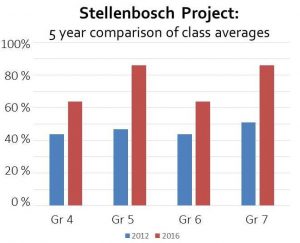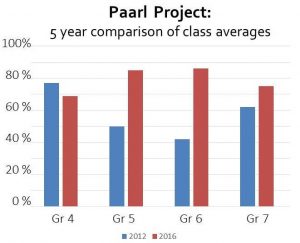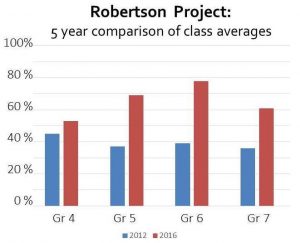We have been monitoring the children in our programme academically since 2012. This has been done as consistently as possible by means of a June and November exam administered to all children from Grade 1 until Grade 7 (and for a few projects until Grade 11). This allows us to now look back at the past 5 years and determine the long term impact our interventions make for our beneficiaries. When we compare the academic results from 2012 to the education results from 2016, there is a clear trend visible.
We noted in 2012 that children in older grades, from Grade 4 upwards, performed very poorly in our exams. This did not surprise us at the time, as these children had no previous intervention or academic support when they wrote our 2012 exams. It meant they had gone through their foundation phase years (Gr R – 3) with very little academic support and the gaps in their educational foundation were substantial. This is very challenging to rectify by the time the child reaches Grade 4 and above.
However when we consider our current Grade 4 to 7 learners, there is a significant improvement in the averages these children obtain. These are learners that have come up with our support from Grade 1 or 2 and are now much stronger Grade 4,5, and 6 learners because of this. Our academic interventions have ensured they build a much more solid foundation and allows them to cope significantly better in the higher grades. The trend is visible across farms and areas, and not only applicable to an isolated case.
FIVE YEAR COMPARISON OF CLASS AVERAGES:




